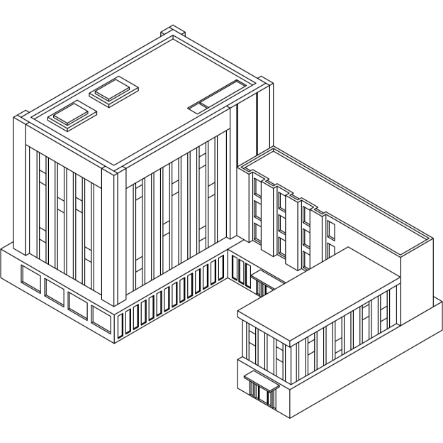What’s in the air?
Common air contaminants in the workplace include:
Toxins
Furniture, building materials, office equipment and cleaning products can all emit volatile organic compounds (VOCs), such as formaldehyde.
Pathogens
High concentrations of bacteria and virus particles in the air increase transmission of diseases, such as COVID-19 or the flu.
Particulates
Dust, dirt, smoke and other inhalable particulate matter (PM) can be produced through activities inside the building, or be drawn in from outdoors.

Because workers do not have control over the quality of the air they breathe at work, it is the responsibility of building owners and operators to maintain a healthy environment. In fact, the Occupational Safety and Health Act (OSH Act) requires employers to provide employees with a safe workplace that is free from recognized hazards likely to cause death or serious harm1 — and there is plenty of research showcasing the harmful effects of poor ventilation and indoor air quality (IAQ) on building occupants and even students at school.
Consider the following:
-

Indoor air pollution is so common that there is a name for its sneaky side effects — Sick Building Syndrome (SBS).2 Respiratory problems, headaches, nausea and skin irritation are just a few of the associated symptoms.
-

Inadequate ventilation was pinpointed as the primary source of IAQ problems in 52% of air quality investigations by the National Institute for Occupational Safety and Health (NIOSH).3
-

Manufacturing processes and indoor forklift operation in poorly ventilated warehouses and industrial buildings can expose workers to harmful — or even fatal — levels of carbon monoxide emissions.4
-

A lack of ventilation is linked with lower cognitive function. Workers in offices with high ventilation and low levels of pollutants have double the cognitive function of workers in offices with average levels of the same pollutants.5
By clearing the indoor air, both workers and employers benefit. Better ventilation and lower levels of pollutants cut disease transmission (and sick days), as well as boost workplace productivity by up to 11 percent.7 Keeping employees safe is not only the right thing to do, it’s good for business.
How to Improve Ventilation at Work
Building owners and operators should hire a certified professional to first perform a Ventilation Verification, and then schedule regular assessments of an HVAC system. Through a Ventilation Verification process, an HVAC professional will check filtration, ventilation rate, air distribution, CO₂ monitoring and more key functions for building health. The report generated from the assessment will provide you with a roadmap for future service appointments, repairs or replacements, depending on how your HVAC system performs.
Find an HVAC Professional
It takes a highly trained HVAC professional to conduct a Ventilation Verification, test and balance an HVAC system, or repair and replace it. If you care about the air you and your tenants breathe, your search for cleaner air starts here.
